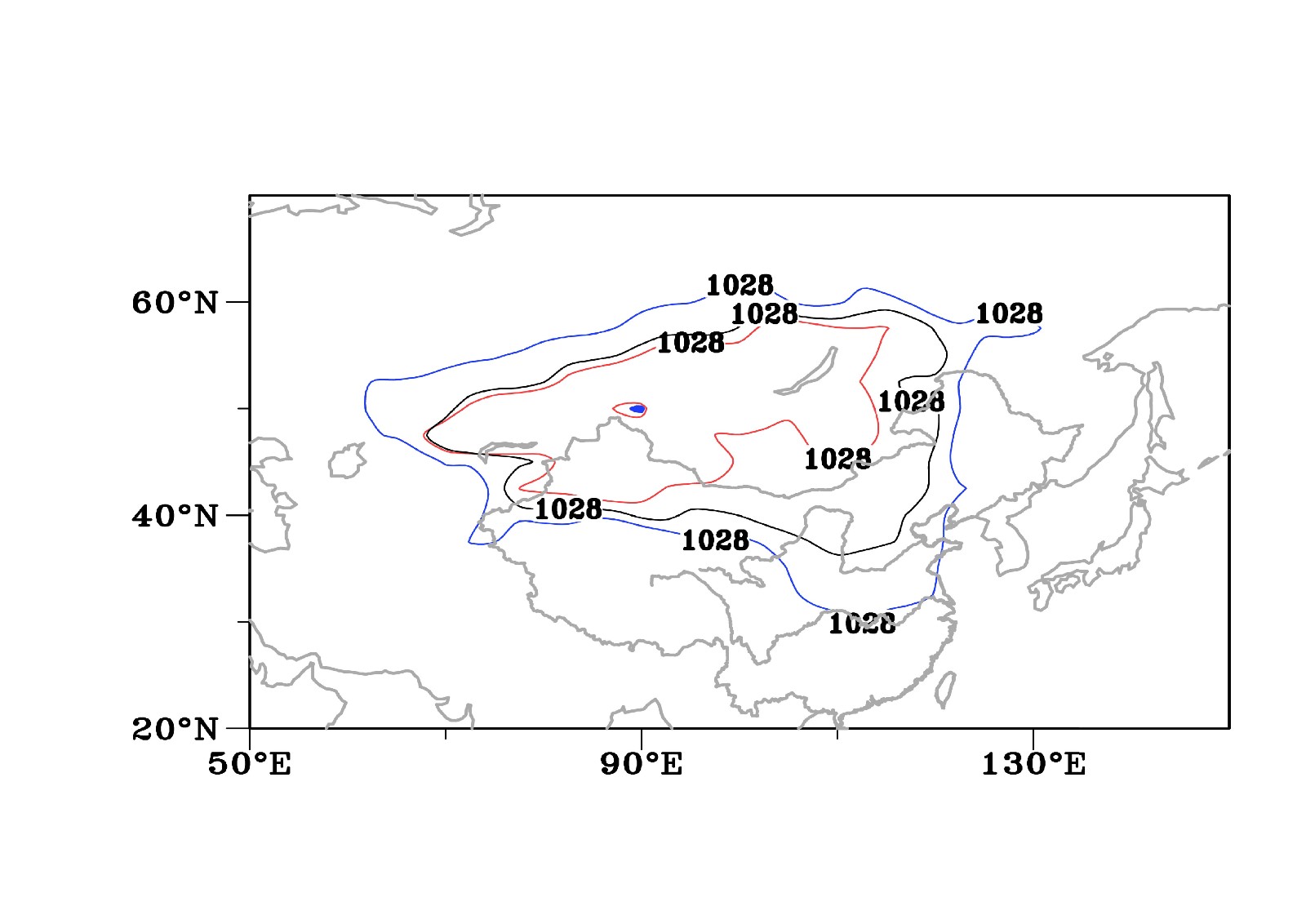本文已被:浏览 1012次 下载 3199次
投稿时间:2018-11-18 修订日期:2019-05-31
投稿时间:2018-11-18 修订日期:2019-05-31
中文摘要: 利用NCEP/NCAR再分析资料和Hadley中心海冰密集度资料,对1951—2017年冬季西伯利亚高压南界东段(SHSBES)的变化特征及其与北极海冰的关系进行研究,并比较季内差异。结果表明:冬季SHSBES在20世纪60年代中期由偏南转偏北,70年代末偏南,自20世纪90年代进入正常略偏南状态。12月SHSBES年代际转折时间较早,1月和2月与冬季相似。冬季SHSBES与同期北极大西洋扇区海冰关系最好,海冰偏少有利于冬季贝加尔湖阻塞高压建立;9月北极大西洋扇区海冰与12月SHSBES关系最好,海冰偏少有利于12月西欧阻塞高压建立;3月北极西半球区海冰则可影响到次年1月和2月的SHSBES,3月海冰偏少使次年1月贝加尔湖西侧阻塞高压建立,2月形成三阻(西欧、贝加尔湖、勘察加半岛)。在动力作用上,阻塞高压环流使西伯利亚高压东南部及其以南处于脊前负涡度平流区,气流下沉,地面增压,促使SHSBES南伸,反之亦然。在热力作用上,9月大西洋扇区和3月西半球区海冰偏少(多)分别使12月、次年2月西伯利亚南界及其以南偏冷(暖),利于地面加压(减小),引导SHSBES南(北)移。
Abstract:Based on the NCEP/NCAR reanalysis data and Hadley sea ice concentration data, the winter variation characteristics of Siberian high (SH) south boundary eastern segment (SHSBES) and its relationship with Arctic sea ice during 1951-2017 were analyzed, and the intraseasonal differences were also discussed. The results showed that SHSBES in winter moves to the north from south in the mid 1960s, and transfers to the south in the late 1970s, then turns a little southerly than the normal location since 1990s. The interdecadal transition time of SHSBES in December is earlier, the interdecadal variations of SHSBES in January and February of the following year are similar to the one in winter. SHSBES in winter is most closely related to the homochronous Atlantic sector Arctic sea ice whose decreases can induce the appearance of Baikal Lake blocking high in winter. SHSBES in December is most influenced by Atlantic sector Arctic sea ice in September, and the Western Hemisphere Arctic sea ice in March has the most significant impact on SHSBES in January and February of the next year. Less sea ice of the former results in the blocking high of September in Western Europe, and the reduction of the latter brings about the blocking high on the west site of Baikal in January. Three blocking highs are located respectively in Western Europe, Baikal and Kamchatka Peninsula in February during the ensuing year. Under the dynamic action of the atmospheric blocking, the southeast of SH and its south region are situated in a negative zone of the relative vorticity advection, the surface pressure increases with the downdraft, which is favorable for the southward movement of SHSBES, and vice versa. The decrease (increase) of Atlantic sector Arctic sea ice in September and Western Hemisphere Arctic sea ice in March can cause the southeast of SH and its south region to become colder (warmer) in December and the next year’s February respectively, facilitating the increase (decrease) of surface pressure, ultimately leading SHSBES into the south (north).
文章编号: 中图分类号: 文献标志码:
基金项目:国家重点研发计划(2018YFC1505602)资助
| 作者 | 单位 |
| 蓝柳茹 | 广西柳州市气象局,柳州 545001 南京信息工程大学气象灾害教育部重点实验室/气候与环境变化国际合作联合实验室/气象灾害预报预警与评估协同创新中心,南京 210044 |
| 李栋梁 | 南京信息工程大学气象灾害教育部重点实验室/气候与环境变化国际合作联合实验室/气象灾害预报预警与评估协同创新中心,南京 210044 |
引用文本:
蓝柳茹,李栋梁,2019.西伯利亚高压南界东段季节及季节内变化特征及成因[J].气象,45(12):1651-1665.
LAN Liuru,LI Dongliang,2019.Seasonal and Intraseasonal Variation Characteristics of Siberian High South Boundary Eastern Segment and Their Causes[J].Meteor Mon,45(12):1651-1665.
蓝柳茹,李栋梁,2019.西伯利亚高压南界东段季节及季节内变化特征及成因[J].气象,45(12):1651-1665.
LAN Liuru,LI Dongliang,2019.Seasonal and Intraseasonal Variation Characteristics of Siberian High South Boundary Eastern Segment and Their Causes[J].Meteor Mon,45(12):1651-1665.


